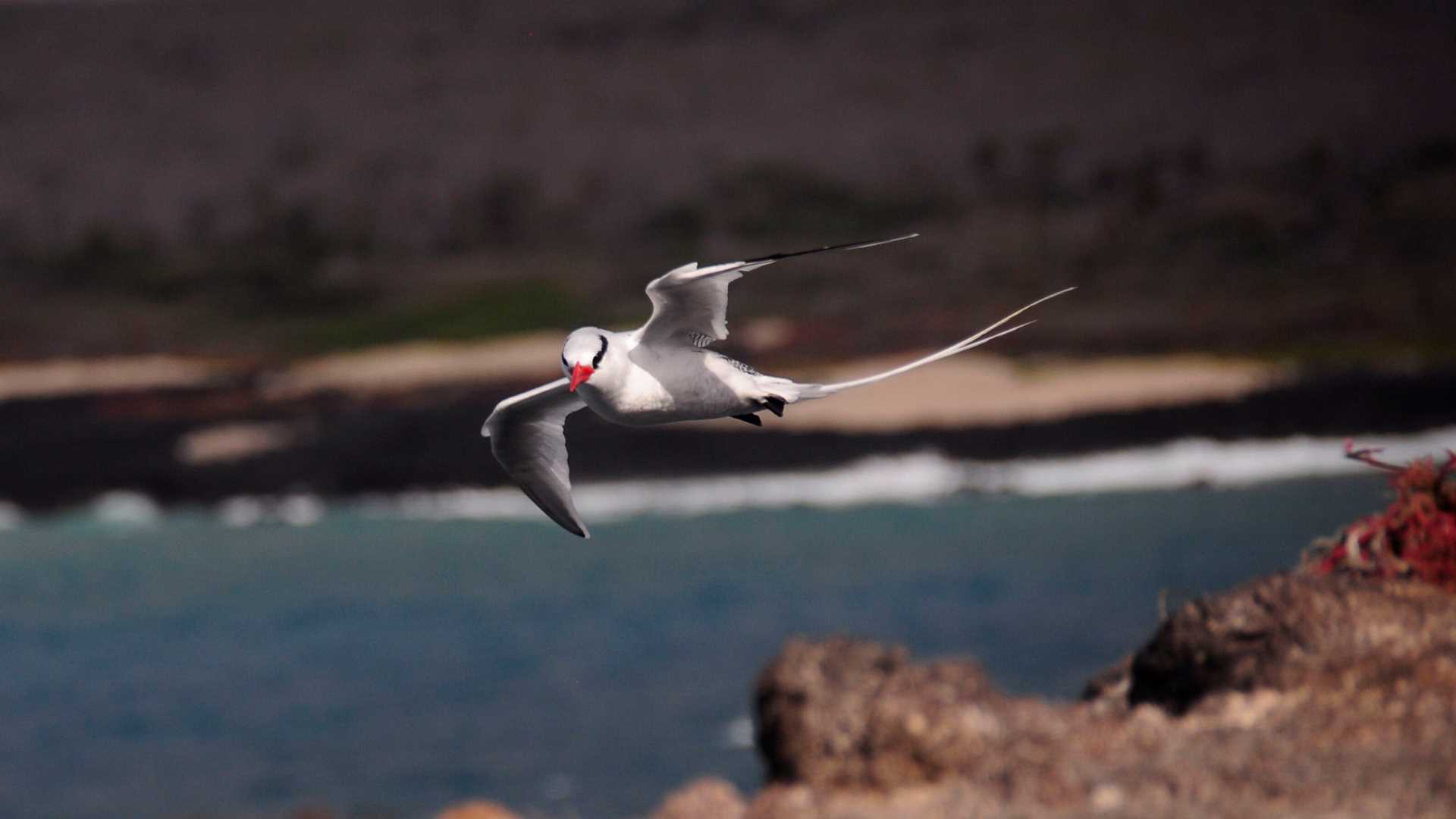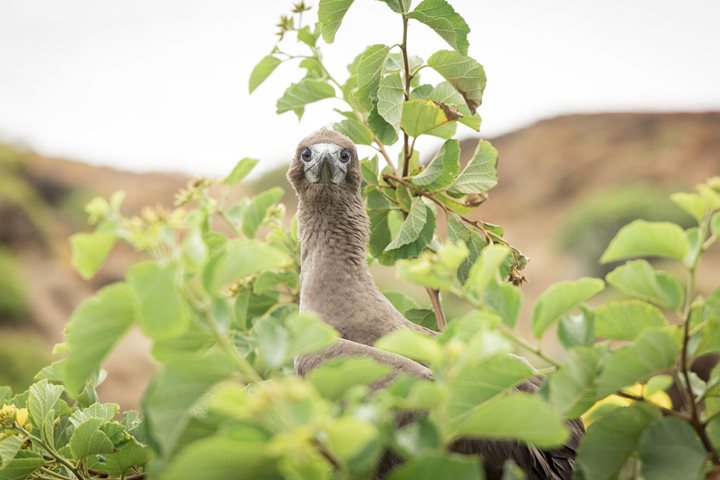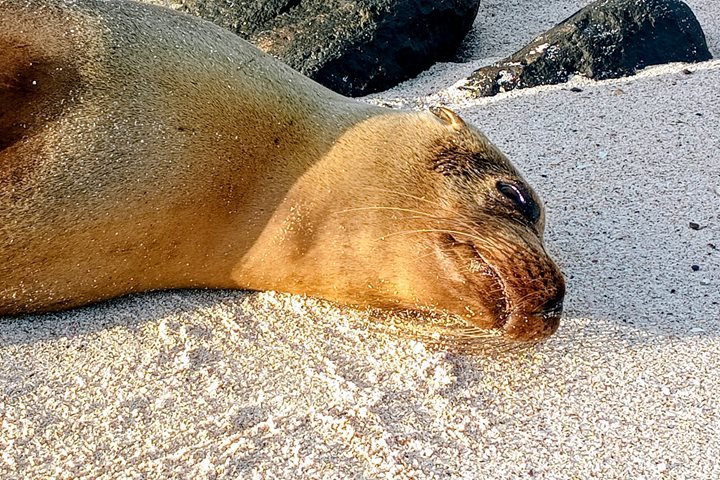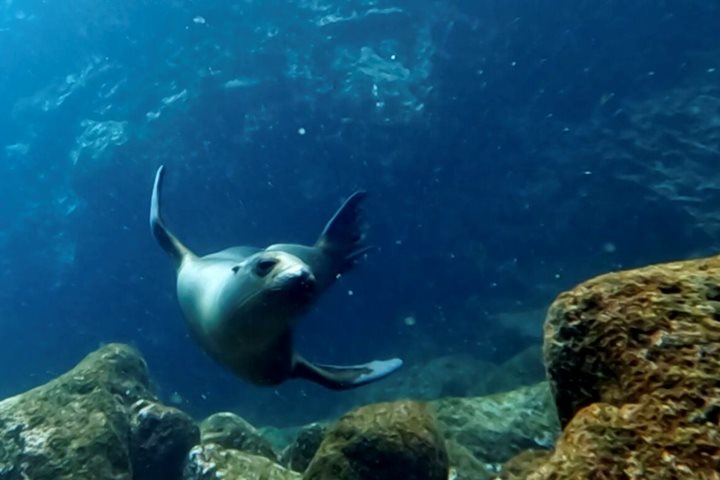We spent the morning on the small island of South Plaza. We were welcomed by Galapagos sea lions; females and pups were all around the landing place. There are a good number of Galapagos land iguanas on South Plaza, and we observed them underneath the prickly pear cacti along the trail. As we walked by the cliffs, we saw many seabirds flying, such as swallow-tailed gulls, Galapagos shearwaters, brown pelicans, magnificent frigatebirds, and red-billed tropicbirds. It is a challenge for photographers to get pictures of birds in flight; however, with the right settings and patience, it is always possible! The afternoon was spent at the island of Santa Fe. Here we enjoyed kayaking and snorkeling inside the protected bay, a great place for colorful fish and playful Galapagos sea lions. We ended the day with a great hike. We observed huge prickly pear cacti, Santa Fe land iguanas, and hundreds of sea lions on a white sandy beach. It was a fantastic day in paradise!
- Daily Expedition Reports
- 30 Jun 2022
South Plaza & Santa Fe Islands, 6/30/2022, National Geographic Islander
- Aboard the National Geographic Islander
- Galápagos
Vanessa Gallo, Naturalist
Vanessa Gallo’s grandparents arrived in the Galápagos Islands in 1936, making her the third generation of her family to live and work in this magical archipelago. She left the islands for the capital city of Quito for high school, where she discovere...
Read MoreShare Report
Galápagos Escape: An 8-Day Voyage
VIEW ITINERARYRelated Reports
6/23/2025
Read
National Geographic Islander II
Española Island
Today we visited Española Island, the southernmost—and one of the most spectacular—of all the Galápagos Islands. Known for its unique wildlife and dramatic landscapes, Española offered us a day full of unforgettable encounters. In the morning, we landed at Gardner Bay, where a long stretch of white coral sand welcomed us. Galápagos sea lions lounged along the shore, completely unfazed by our presence. Offshore, we snorkeled in the clear waters among colorful reef fish and Pacific green sea turtles. Playful sea lions swirled around us like underwater acrobats. In the afternoon, we explored Punta Suárez, one of the best wildlife viewing sites in the entire archipelago. The trail led us through colonies of Nazca boobies and blue-footed boobies, some engaged in nesting or courtship dances. We also witnessed waved albatrosses, many sitting on eggs or gliding in the wind above the cliffs. The highlight for many was watching a pair of albatrosses perform their elaborate, synchronized courtship ritual, full of beak clacking and head swaying. As we approached the cliff’s edge, we were treated to the dramatic sight of waves crashing against the rocks and the famous blowhole, which sent bursts of water high into the air. With seabirds soaring overhead and marine iguanas sunbathing in every direction, the magic of Española was on full display.
6/22/2025
Read
National Geographic Islander II
Floreana Island
Today the guests of National Geographic Islander II had a chance to snorkel at Champion Islet, just off Floreana Island. It was a breathtaking expedition to one of the most vibrant marine ecosystems in the Galapagos. As soon as we slipped into the water, we were greeted by schools of colorful fish and playful Galapagos sea lions.







